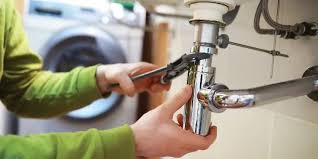How to Solve the Problem of Outdoor Camping Power Generation
When you head out for camping, having a reliable power source is crucial. You can choose from several methods of power generation to meet your needs while enjoying the outdoors. The right choice will depend on capacity, wattage, efficiency, convenience, and portability.
Types of Power Generation Methods
There are several popular methods for generating power while camping. Here are a few options:
- Solar Power: Solar panels capture sunlight and convert it into energy. They’re quiet and eco-friendly. Portable solar panels are easy to set up.
- Generators: Traditional gas generators provide a lot of power. However, they’re noisy and require fuel, which might be inconvenient.
- Battery Packs: These are rechargeable units that store power for use when needed. They can be charged with solar panels or electricity from your home.
Choosing the right method depends on your specific needs, the length of your trip, and the devices you plan to power.
Key Considerations: Capacity, Wattage, and Efficiency
When selecting a power generation method, focus on three key factors:
- Capacity: This refers to how much power your setup can provide. Check the amp-hour rating for batteries or the watts produced by solar panels or generators
- Wattage: Understand the power requirements of your devices. Each device has a certain wattage that it needs to function properly. Ensure your power source can meet these needs..
- Efficiency: Look for options that convert energy effectively. Solar panels generally have a specific efficiency rating. Higher efficiency means more power generated from sunlight.
Balancing these factors will help you have enough power without bringing too much weight or equipment.
Importance of Convenience and Portability
Convenience is a big factor when choosing a power generation method for camping. You want something that’s easy to set up and use.
- Portability: Check the weight and size of your chosen equipment. Solar panels should be lightweight and easy to carry. Similarly, battery packs should fit well into your camping gear.
- Ease of Use: Some systems can be set up in minutes. Look for user-friendly interfaces, especially if you are not tech-savvy.
Having a portable and convenient power source allows you to relax and enjoy your camping experience without worrying about running out of power.
Solar Power Solutions for Camping
Using solar power can make your camping experience more enjoyable and sustainable. By harnessing the sun’s energy, you can generate electricity for your needs. Here’s what you should know about solar panels, setups, and battery packs.
Choosing the Right Solar Panels
When selecting solar panels for camping, you want to focus on portability and efficiency. Foldable solar panels are a great option because they are lightweight and easy to carry. Look for panels with a high wattage rating for faster charging.
Consider monocrystalline panels for their efficiency in low-light conditions. If you camp in sunny areas, polycrystalline panels can also be a good choice, often at a lower cost. Ensure your panels come with a protective case to keep them safe during transport.
Optimal Solar Panel Setup
An effective solar panel setup requires careful placement to maximize sunlight exposure. Set your panels at an angle that faces the sun directly, usually around 30 to 45 degrees.
Try to put them in an open area without shade. If you’re using multiple panels, make sure they are connected properly; most will use a parallel connection for better performance. Additionally, monitor the angle throughout the day and adjust as needed to capture the most sunlight.
Using Solar Charging Effectively
To get the best results from solar charging, use energy-efficient appliances. Devices like LED lights and portable chargers consume less power, making it easier to keep everything running.
You can also supplement your solar power with solar controllers to manage energy flow. This helps prevent overcharging and extends the lifespan of your batteries. Keep an eye on your power usage to avoid running out of energy when you need it most.
Solar Power and Battery Packs
Battery packs store energy from solar panels. Choose packs with adequate capacity—like a 100Ah battery for powering small appliances over a weekend.
Opt for compatible packs with safety features. Lithium-ion batteries are preferred for their lightweight and longevity. Ensure proper connections for smooth operation.
Selecting the Perfect Portable Generator
Choosing the right portable generator can make your camping experience much more enjoyable. You need to consider different types, power output, and portability to find the best fit for your needs.
Portable Generator Options: Gas vs. Inverter
When selecting a portable generator, you typically have two main options: gas generators and inverter generators.
- Gas Generators: These are powered by gasoline and are often more powerful. They usually have higher wattage, which allows you to run multiple devices at once. However, they can be noisy and emit exhaust fumes, making them less ideal for quiet camping spots.
- Inverter Generators: These models produce clean and stable power. They are generally quieter and more fuel-efficient than gas generators. Inverter generators are excellent for sensitive electronics, such as laptops and smartphones.
Your choice depends on your power needs and noise preferences while camping.
Understanding Rated Power and Output
Rated power is crucial when selecting a portable camping generator. This rating tells you how much electricity a generator can provide continuously.
Here are some key terms you should know:
- Starting Wattage: The power needed to start devices like refrigerators or air conditioners.
- Running Wattage: The continuous power required after devices are running.
Make sure to select a generator that meets or exceeds your total power requirements. A good rule of thumb is to add up the wattage for all devices you want to use at the same time. Then, choose a generator with a rated power that can handle that total.
Assessing Weight and Portability
Consider the weight and design of the portable generator. A lightweight generator is easier to transport and set up at your campground.
- Weight Range: Look for generators that weigh between 30 to 50 pounds for easy handling.
- Design Features: Some models come with wheels or carrying handles, making them more portable.
Always balance power output with ease of transport. You want a generator that can power your devices without being a burden to carry.
Exploring Alternative Power Sources
When you head out for outdoor camping, having reliable power sources is essential. There are various ways to generate electricity while enjoying nature, including wind turbines, utilizing the power grid, and being prepared for outages.
Wind Turbines for Remote Camping
If you camp in a spot far from electricity, small wind turbines can be a great choice. These turbines convert wind energy into electricity.
- Portability: Look for compact options that are easy to carry.
- Setup: They can be set up quickly, usually with just a few stakes and a stand.
- Energy Output: Even a small turbine can generate enough power to charge devices or run lights.
Using a wind turbine means you tap into a clean, renewable source of energy, making it a perfect fit for eco-friendly camping.
Using the Power Grid When Available
In areas near established campsites or parks, you might have access to the local power grid.
- Site Amenities: Check if the campsite offers electrical hookups.
- Convenience: This option allows you to use standard power supplies without special equipment.
- Charging Options: You can charge devices or run larger appliances, enhancing your camping experience.
Always ask ahead about power availability. This helps you plan and ensures you have what you need without extra gear.
Staying Powered During Outages
Power outages can happen, even when you least expect it. Having back-up plans is essential for your camping trip.
- Portable Power Stations: Consider battery-powered units that can power small devices.
- Solar Generators: These can store energy from the sun for later use.
- Emergency Kits: Keep essential items like flashlights, portable chargers, and extra batteries handy.
Being prepared means you can enjoy your time camping without fear of losing power.
Portable Power Stations and Accessories
Portable power stations are essential for outdoor camping, offering a reliable power source for various devices. Knowing how to choose the right model and use it effectively can make your camping experience much more enjoyable.
Comparing Portable Power Stations
When selecting a portable power station, consider its capacity and output options. Look for units with AC outlets and DC outputs. AC outlets typically provide 110V or 220V power, suitable for charging laptops and small appliances.
DC outputs, often at 12V, are great for charging smaller devices like phones and lights. Some units even support solar charging, which can extend your power supply while being eco-friendly.
Creating a list of your power needs can help you choose the right station. Here’s a quick comparison table:
| Feature | Portable Power Station A | Portable Power Station B |
| AC Output | 2 x 110V | 1 x 220V |
| DC Output | 2 x 12V | 1 x 12V |
| Battery Capacity | 500Wh | 300Wh |
Utilizing AC Outlets and DC Outputs
Using outlets effectively is essential. AC outlets suit larger devices like cooking appliances or laptops; check wattage limits.
For small gadgets, use DC outputs for items like smartphones. Ensure cables are compatible and handle connections carefully to prevent damage.
Caring for Your Equipment
Proper care can keep your portable power station in great shape. Start by storing it in a cool, dry place, away from direct sunlight and moisture. This helps prevent damage to the battery.
Regular maintenance is also important. Check connections and clean any dust or dirt from the ports. If your station supports solar charging, ensure the solar panels are clean for efficient charging.
Lastly, monitor the battery level during use. Avoid fully draining your power station, as this can reduce its lifespan. Keeping it between 20% and 80% is ideal for long-term health.
also read: Robot Pool Cleaner Guide: How Long Should I Run My Pool Robot?







